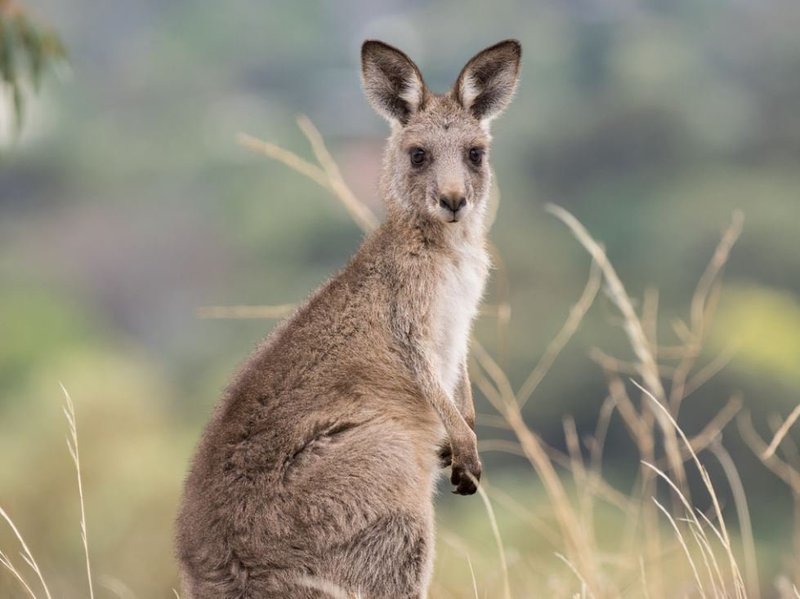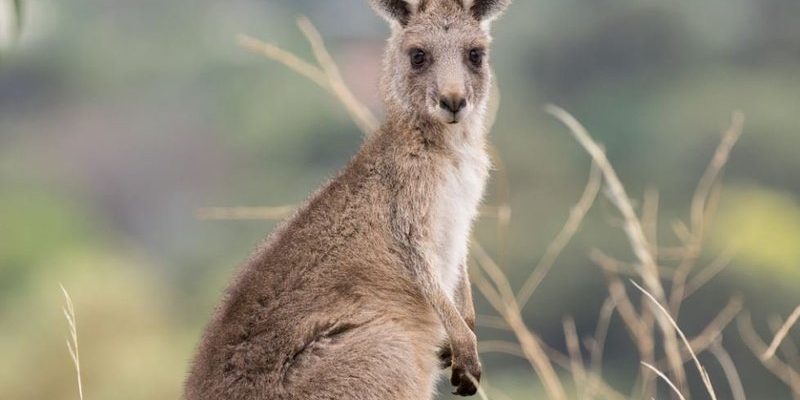
When you think about endangered species, you might picture exotic animals like tigers or elephants. But what about those right in your backyard, like the Eastern Grey Kangaroo? While they are not classified as endangered yet, that doesn’t mean they don’t face challenges. In this article, we’ll explore the current status of the Eastern Grey Kangaroo, dive into conservation efforts, and look at what you can do to help ensure their future.
Understanding the Eastern Grey Kangaroo
The Eastern Grey Kangaroo, scientifically known as *Macropus giganteus*, is a fascinating creature. They’re typically found on the eastern side of Australia and are known for their adaptability to different environments, from woodlands to grasslands. You might even spot them in urban areas, grazing in parks and open spaces.
These kangaroos are social animals, often seen in groups called mobs. Each mob has a hierarchy, with a dominant male leading the group. They are herbivores, primarily eating grasses and leaves. Watching them leap around effortlessly is like witnessing nature’s gymnasts in action! But what happens when their habitats change due to human activities, like farming or urban development? That’s a big question we need to unpack.
The Conservation Status of the Eastern Grey Kangaroo
So, is the Eastern Grey Kangaroo endangered? Not quite. According to the International Union for Conservation of Nature (IUCN), they are classified as “Least Concern.” This means they are not currently facing a high risk of extinction. But don’t let that label fool you. While they might seem secure, their populations are affected by various factors, including habitat loss, hunting, and climate change.
It’s important to understand that “Least Concern” doesn’t mean they’re in the clear. Their numbers can fluctuate based on environmental conditions and human activities. Just last year, some reports indicated localized declines in certain regions, particularly where land was cleared for agriculture. This is why ongoing monitoring and conservation efforts remain crucial.
Threats to Their Survival
Even though the Eastern Grey Kangaroo is not technically endangered, it faces several significant threats that can impact its populations. Let’s break these down:
- Habitat Loss: As urban areas expand and agriculture spreads, we’re taking away the natural spaces these kangaroos call home. Think about it: when we build roads and houses, there’s less room for wildlife.
- Climate Change: Changes in temperature and rainfall can affect the availability of food and water for kangaroos. As their habitat changes, they may struggle to find what they need to survive.
- Hunting and Culling: In some areas, kangaroos are culled to manage populations. While this can be necessary for balancing ecosystems, it must be done thoughtfully to ensure kangaroos aren’t pushed too close to danger.
Addressing these threats requires cooperation from several stakeholders, including government authorities, conservation groups, and local communities.
Conservation Efforts in Action
Numerous organizations are working hard to protect the Eastern Grey Kangaroo and their habitats. From wildlife sanctuaries to educational programs, here’s how conservation efforts are making a difference:
- Habitat Restoration: Many conservation groups are focused on restoring natural areas that kangaroos and other wildlife depend on. This might include planting native vegetation and creating wildlife corridors to help them move safely between areas.
- Research and Monitoring: Keeping an eye on kangaroo populations helps scientists understand their needs and challenges. This research guides conservation strategies and informs policy decisions.
- Public Awareness Campaigns: Educating the public about the importance of kangaroos and their habitat is crucial. The more people know, the more likely they are to support conservation initiatives.
Taking these steps can help ensure that the Eastern Grey Kangaroo continues to thrive in the wild.
What You Can Do to Help
Feeling inspired to make a difference? Good. There are plenty of ways you can contribute to the conservation of the Eastern Grey Kangaroo. Here are a few simple ideas:
- Support Local Conservation Groups: Donating your time or resources to organizations that work to protect kangaroos and their habitats can make a real impact.
- Spread the Word: Talk about kangaroo conservation with friends and family. The more people who understand their importance, the better.
- Practice Sustainable Living: Reducing waste, using resources wisely, and supporting eco-friendly businesses helps protect the environment, benefiting all animals, including kangaroos.
Every little bit counts, and your efforts can contribute to a future where kangaroos continue to thrive.
The Bigger Picture: Biodiversity and Ecosystem Health
When we speak about the Eastern Grey Kangaroo, we’re not just talking about one species. We’re discussing the interconnected web of life in Australia. Kangaroos play a vital role in their ecosystem, helping to maintain healthy grasslands and serve as prey for larger predators. If their populations decline, it can have a ripple effect on other species and the entire ecosystem.
Here’s the thing: preserving the Eastern Grey Kangaroo isn’t just about saving cute animals. It’s about protecting biodiversity and maintaining the health of our planet. When we preserve natural habitats, we also safeguard countless other species that share their space.
While the Eastern Grey Kangaroo is currently classified as “Least Concern,” the threats they face remind us that conservation is a continuous journey. It calls for vigilance, dedication, and a collective effort from all of us. By understanding their importance and supporting conservation strategies, we can play a part in ensuring that these magnificent creatures continue to grace the Australian landscape for generations to come.
So, the next time you spot a kangaroo, take a moment to appreciate not just its beauty but also the importance of protecting its home. Every action counts, and together, we can make a difference.

